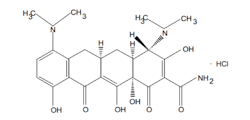Nonsurgical treatment of chronic periodontitis: an evidence-based clinical practice guideline and systematic review
Editor’s note: This information has been complied by Maria Perno Goldie, RDH, MS, from publications of the ADA Center for Evidence-Based Dentistry.
“A panel of experts convened by the American Dental Association (ADA) Council on Scientific Affairs presents an evidence-based clinical practice guideline and systematic review on nonsurgical treatment of patients with chronic periodontitis by means of scaling and root planing (SRP) with or without adjuncts. For patients with chronic periodontitis, SRP showed a moderate benefit, and the benefits were judged to outweigh potential adverse effects. The authors voted in favor of SRP as the initial nonsurgical treatment for chronic periodontitis. Although systemic subantimicrobial-dose doxycycline and systemic antimicrobials showed similar magnitudes of benefits as adjunctive therapies to SRP, they were recommended at different strengths (in favor for systemic subantimicrobial-dose doxycycline and weak for systemic antimicrobials) because of the higher potential for adverse effects with higher doses of antimicrobials. The strengths of 2 other recommendations are weak: chlorhexidine chips and photodynamic therapy with a diode laser.
LEARN MORE | Thoughtful use of local delivery antimicrobial agents in periodontitis
Recommendations for the other local antimicrobials (doxycycline hyclate gel and minocycline microspheres) were 'expert opinion for.' Recommendations for the nonsurgical use of other lasers as SRP adjuncts were limited to expert opinion against because there was uncertainty regarding their clinical benefits and benefit-to-adverse effects balance.
Note that expert opinion for does not imply endorsement but instead signifies that evidence is lacking and the level of certainty in the evidence is low. As part of the evidence-based approach to care, these clinical recommendations should be integrated with the practitioner’s professional judgment and the patient’s needs and preferences.” (1)
LEARN MORE | Study reveals alcohol consumption can negatively affect periodontal health
The full report and systematic review are available online, and a chairside guide is also available here.
In the report, the following questions were posed:
- “Question 1: In patients with chronic periodontitis, does SRP (hand or ultrasonic), when compared with no treatment, supragingival scaling and polish (prophylaxis), or debridement, result in greater improvement of clinical attachment level (CAL)?” (2)
- “Question 2: In patients with chronic periodontitis, does the use of locally delivered antibiotics or antimicrobials, systemic antibiotics, combinations of locally delivered and systemic antibiotics, agents for biomodification or host modulation, or nonsurgical lasers as adjuncts to SRP, compared with SRP alone, result in greater improvement of CAL?” (2)
Practical implications and conclusions
“For patients with chronic periodontitis, SRP showed a moderate benefit, and the benefits were judged to outweigh potential adverse effects. The authors voted in favor of SRP as the initial nonsurgical treatment for chronic periodontitis. Although systemic subantimicrobial-dose doxycycline and systemic antimicrobials showed similar magnitudes of benefits as adjunctive therapies to SRP, they were recommended at different strengths (in favor for systemic subantimicrobial-dose doxycycline and weak for systemic antimicrobials) because of the higher potential for adverse effects with higher doses of antimicrobials. The strengths of 2 other recommendations are weak: chlorhexidine chips and photodynamic therapy with a diode laser. Recommendations for the other local antimicrobials (doxycycline hyclate gel and minocycline microspheres) were expert opinion for. Recommendations for the nonsurgical use of other lasers as SRP adjuncts were limited to expert opinion against because there was uncertainty regarding their clinical benefits and benefit-to-adverse effects balance. Note that expert opinion for does not imply endorsement but instead signifies that evidence is lacking and the level of certainty in the evidence is low.” (2)
LEARN MORE | Bugs, gums, and blood vessels
References
1. Nonsurgical Treatment of Chronic Periodontitis. ADA Center for Evidence-Based Dentistry. http://ebd.ada.org/en/evidence/guidelines/nonsurgical-treatment-of-chronic-periodontitis. Accessed July 9, 2015.
2. Smiley CJ, Tracy SL, Abt E, et al. Evidence-based clinical practice guideline on the nonsurgical treatment of chronic periodontitis by means of scaling and root planing with or without adjuncts. JADA, Volume 146, Issue 7, Pages 525–535. July 2015.



